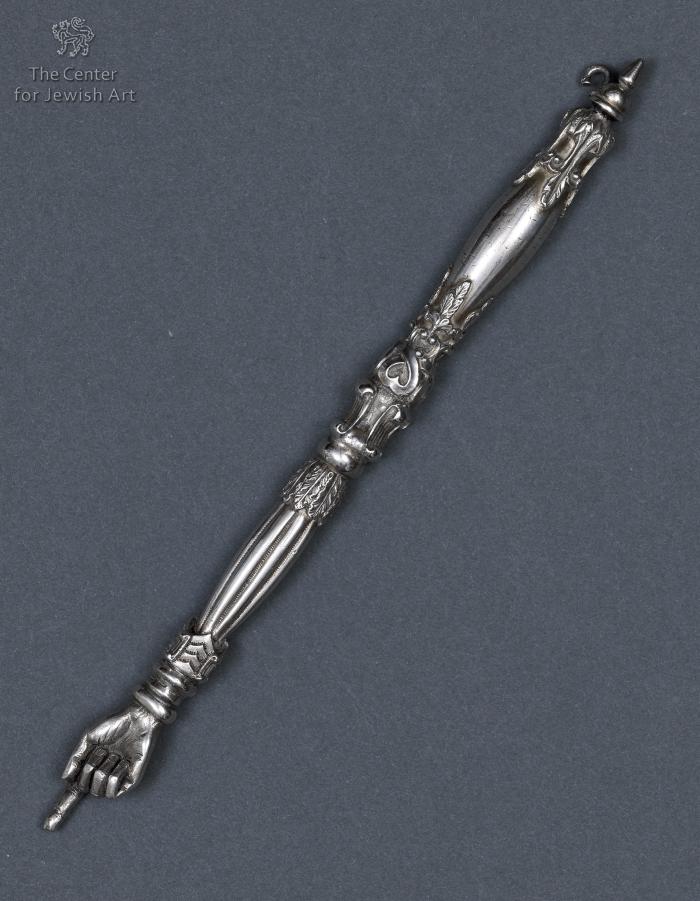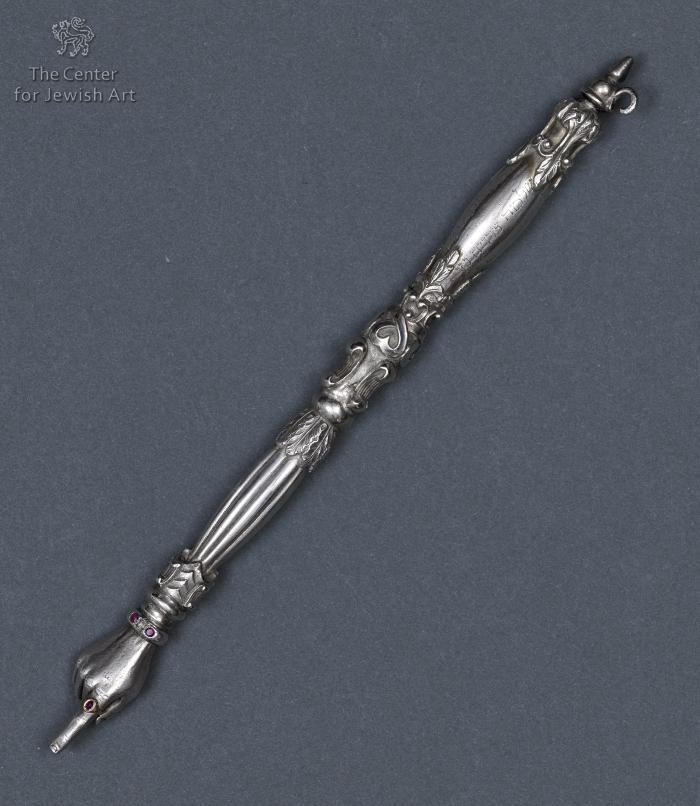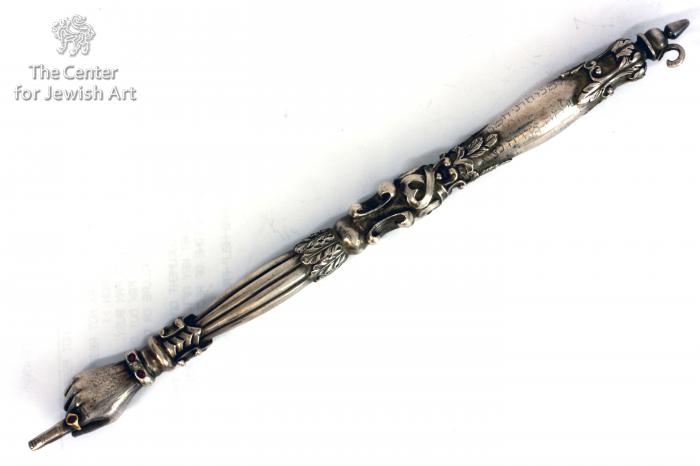Obj. ID: 37264 Torah pointer, Ukraine, circa 1800

sub-set tree:
O | Ornamentation: | Ornament
H | Human Figure | Hand
|
The following description was prepared by William Gross:
The pointer used by the Torah reader to keep the place is known in European communities as the *yad, "hand," or the etẓba, "finger," and in Sephardi and Eastern communities as the moreh, "pointer," or kulmus, "quill," the former because of its function and the latter because of its shape. Halakhic sources also use the terms moreh or kulmus. The pointer was originally a narrow rod, tapered at the pointing end, usually with a hole at the other end through which a ring or chain could be passed to hang the pointer on the Torah scroll. An additional reason for using the pointer was to prevent the oily finger from touching the parchment and inked letter, something that would eventually cause severe deterioration.
The original form of the pointer was preserved in Eastern communities, the differences from one community to another being mainly in length and ornamentation. In certain communities, a hand with a pointing finger was added, and accordingly, the pointer came to be known as a yad, "hand," or eẓba, "finger." Pointers are made for the most part of silver or silver-plated brass, but in a few European communities, they used to be made of wood. In such cases, the pointers were carved in the local folk-art style.
There a few Torah pointers from Galicia that are solidly cast in very ornamental classical design. This Yad is apparently one of that group, further distinguished by the use of a diamond and rubies. There is a small stone-set ring on the pointing finger and a bracelet on the wrist that is set with a diamond and rubies. The inscription is nicely incised on the upper part of the shaft.
Inscription: For the (eternal) rest of the praiseworthy and important Shlomo Tzedoyah, may he rest in Eden








